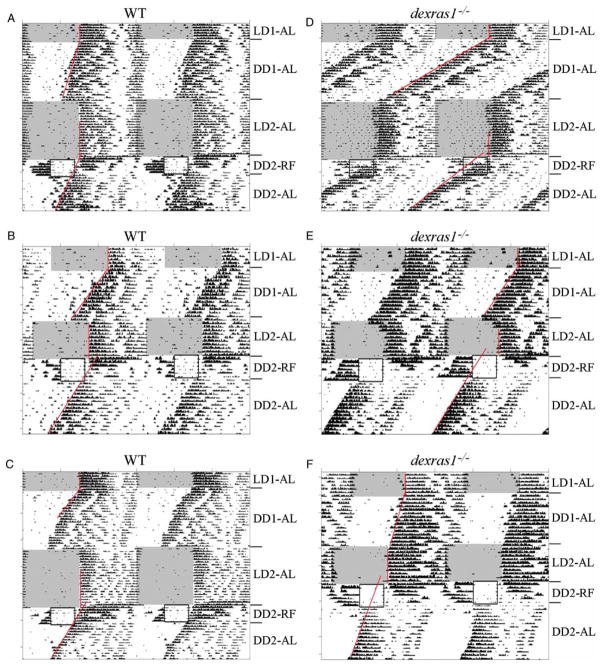FIGURE 2.
The behavioral effects of daytime RF under DD are altered in the absence of Dexras1. A–F, Representative double-plotted actograms of wheel-running activity of (A–C) WT and (D–F) dexras1−/− mice subjected to RF for six consecutive days under DD, between ZT 6 and ZT 11 (relative to the previous 12L:12D cycle). Subsequently, mice were returned to ad libitum (AL) feeding conditions and maintained in DD for an additional 2 wks. Areas shaded in gray indicate periods of light. Boxed regions indicate periods of food availability. Red lines denote regression lines fitted to daily activity onsets. LD1-AL, ad libitum feeding under the first 12L:12D schedule. DD1-AL = ad libitum feeding under the first DD schedule; LD2-AL = ad libitum feeding under the second 12L:12D schedule; DD2-RF = restricted feeding under the second DD schedule; DD2-AL = return to ad libitum feeding under the second DD schedule.

